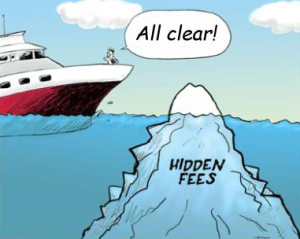For a cost engineer every project presents a new challenge: how to estimate the total project cost. The most difficult part is not the known parts of the scope, but what is still unknown. All costs have to be found; otherwise you cannot deliver a proper figure to management for decision making. How do you know your estimate covers the full project?
What is included in the scope?
You need to understand the scope: what is the project about? What are the deliverables and who is involved? The contract should outline this. As a cost engineer, you should be able to interpret this document and understand in rough lines what needs to be done to build the plant or carry out the job at hand.
As cost engineer, find out what is included in the scope of the project, but even more important: also what is not included. For example, let’s say a new pump is added to a pump station. A question might be: is the new power cable part of this project, or a separate project to update the power grid of the entire facility? Maybe an existing cable should first be dug out? Make sure you and your project team understands the scope.
Unknown costs
Then there is the part of the project that simply has not been detailed out yet: how will the pipeline be routed? Will activities be carried out manually? What kind of piping will we need? How to handle the new material type? As cost engineer you will need to make a lot of assumptions.
When activities will take more or less time depending on site conditions you can make use of factors to incorporate these effects. Think of factoring in more costs for welding a special material type, costs for working at height, or travel longer distances.
When the design is not mature enough, MTOs are not complete yet. To incorporate updates in design and extra materials, include allowances and preliminary sums.
Make sure to include sufficient contingency funds, otherwise you will be surprised later when unforeseen events happen. Organize risk management sessions to sit together will all parties to come up with possible causes for risks. Cover price fluctuations with escalation.
Reporting and communicating the total cost
When you have constructed your total estimate, it needs to be reported and communicated to the rest of the project team. For them to correctly interpret the figures, always include a Basis of Estimate report to outline the inclusions, exclusions and assumptions you have made. Without this, the estimate is just a meaningless number.
Conclusion
It is not an easy task to set up an estimate that covers the complete scope of a project. Costs are hidden everywhere which need to be covered. A well-trained cost engineer with the proper tools will be able to find them. By understanding all sources of cost, you will be able to minimize expenses, thereby maximizing the return on your investments.
Something to add to this article or do you have a question? Please contact us at contact@costengineering.eu
Related articles
White Paper: Scope Development Problems in Estimating
Risk Quantification: Key to Investment Decision Making, and Project Control
Keep your project costs in control - 5 tips to secure your costs
Project estimation needs accurate forecasting, but how to realize this?
 Contact us
Contact us 